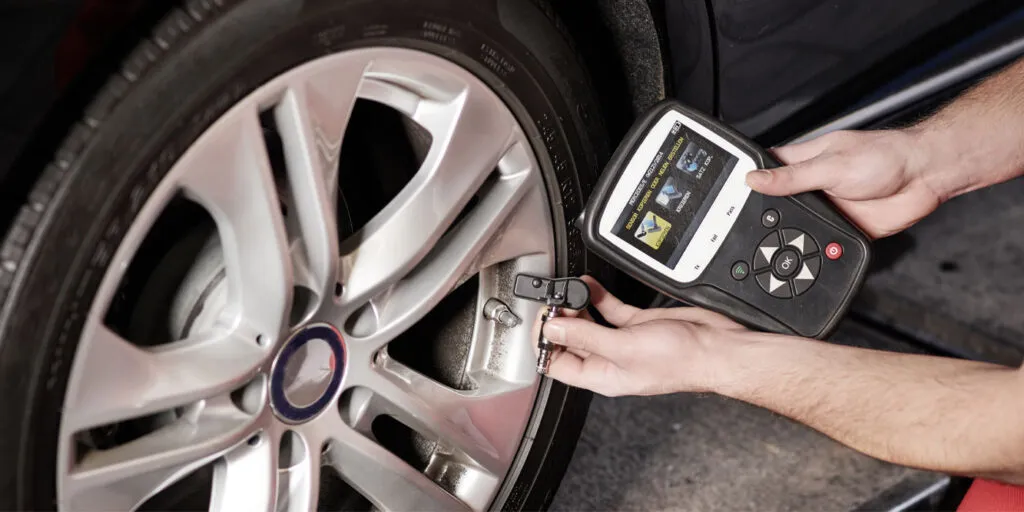If you’ve ever wondered how your car knows when your tire pressure is low, the answer lies in the tire sensor. This small but crucial component plays a significant role in maintaining your vehicle’s safety and efficiency. But where is the tire sensor located In this article, we will explore the location of the tire sensor, how it works, and why it’s essential to your vehicle’s performance.
What Is a Tire Sensor?
A tire sensor, also known as a Tire Pressure Monitoring System (TPMS) sensor, is a device that monitors the air pressure inside your vehicle’s tires. The sensor alerts you when the pressure drops below a safe level, helping prevent accidents, improve fuel efficiency, and extend the lifespan of your tires.
Types of Tire Sensors
Before we delve into the location of the tire sensor, it’s essential to know that there are two main types: direct and indirect.
- Direct TPMS: These sensors are located inside the tire and directly measure the pressure.
- Indirect TPMS: These sensors don’t measure the pressure directly. Instead, they monitor the wheel’s speed and use it to estimate the tire pressure.
Where Is the Tire Sensor Located?
The location of the tire sensor depends on the type of TPMS system your vehicle uses.
1. Inside the Tire
For vehicles with a direct TPMS system, the tire sensor is located inside the tire itself. Specifically, it’s usually attached to the valve stem, which is the part of the tire where you add air. The sensor is mounted on the inside of the rim and is protected by the tire’s rubber, making it less prone to damage.
When you inflate your tires, the sensor reads the pressure and sends the data to the vehicle’s onboard computer. If the pressure drops below a certain level, the system triggers a warning light on your dashboard.
2. Outside the Tire
In vehicles equipped with an indirect TPMS system, the sensors are not located inside the tire. Instead, they are part of the vehicle’s anti-lock braking system (ABS). These sensors monitor the rotational speed of the wheels. When a tire is underinflated, its diameter decreases, causing it to rotate faster than properly inflated tires. The sensor detects this difference in speed and sends a signal to the vehicle’s computer, which then alerts you to a potential problem.
Why Is the Tire Sensor Important?
The tire sensor is vital for several reasons. First and foremost, it ensures your safety by alerting you to low tire pressure. Driving with underinflated tires can lead to poor handling, longer stopping distances, and even tire blowouts. Additionally, maintaining the correct tire pressure can improve your fuel efficiency and extend the life of your tires, saving you money in the long run.
Common Issues with Tire Sensors
While tire sensors are incredibly useful, they can sometimes encounter issues. Here are some common problems and how to address them:
- Battery Failure: Tire sensors are powered by small batteries that can wear out over time. If the sensor stops working, it may be due to a dead battery. In most cases, you’ll need to replace the entire sensor.
- Sensor Damage: The sensor inside the tire can get damaged during tire changes or from road debris. If you notice a persistent warning light after changing a tire, the sensor might have been damaged.
- False Alarms: Sometimes, the TPMS system may give false alarms, indicating low pressure even when the tires are properly inflated. This can happen due to interference or a malfunctioning sensor.
How to Maintain Your Tire Sensors
To ensure your tire sensors remain in good working condition, regular maintenance is key. Here are a few tips:
- Check Tire Pressure Regularly: Even with a TPMS, it’s a good habit to check your tire pressure manually at least once a month. This will help you spot any issues early.
- Avoid Harsh Driving Conditions: Driving on rough roads or through potholes can damage your tire sensors. Try to avoid these conditions whenever possible.
- Replace Sensors When Necessary: If a sensor is damaged or the battery dies, don’t delay in replacing it. Driving without a functioning TPMS can put your safety at risk.
Conclusion
Understanding where the tire sensor is located and how it works can help you maintain your vehicle’s safety and efficiency. Whether it’s inside the tire as part of a direct TPMS or integrated with the ABS in an indirect system, the tire sensor is a critical component of your vehicle. Regular maintenance and prompt attention to any issues will ensure that your TPMS continues to function correctly, giving you peace of mind on the road.
Need new or used tires? Visit Zee’s New and Used Tires for all your tire needs and keep your vehicle running smoothly.




